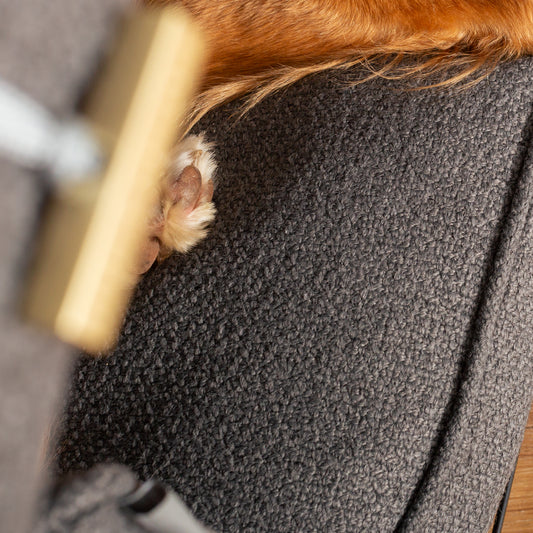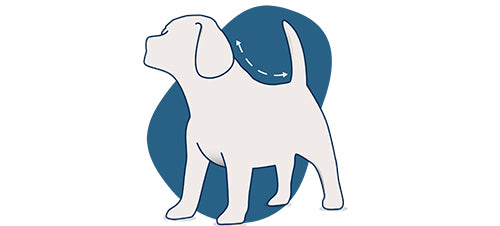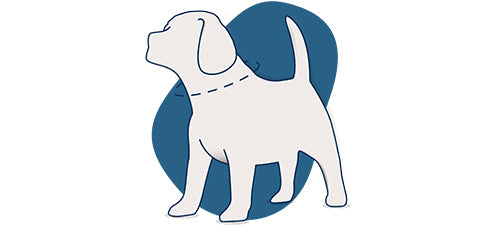Whether you are adopting a newborn puppy or giving a home to an older dog, adding a furry family member to your home can be really exciting. That being said, no matter whether it’s just you, a home with a baby or small children, or a household with other dogs and cats, it is important to make introductions strategically and at a good, well-managed pace. However, this can be tricky, especially for new dog owners.
To get you prepared to welcome your new family addition with open paws, here at Lords and Labradors, we have put together this handy guide to give you everything you need to know before introducing a new dog to the family.
Introducing A New Puppy To Your Home

No matter the age or breed of a dog, when they are welcomed into a new family it will take them a little time to readjust and acclimatise. Dogs come with a whole host of different personality traits, personal characteristics, and, in the case of rescue dogs, histories. While some may seem super friendly and comfortable around new people from the start, others may be less trusting and need more time to build new relationships. Indeed, while some dogs love being part of a pack and crave the companionship being part of a family brings, it’s important to understand that other pups may prefer more independent lifestyles - this can be particularly true for rescue dogs from complicated or unknown backgrounds.
When introducing a dog to a new home it is recommended that you allow your new four-legged friend to explore and investigate different rooms and areas at their own pace. If, for the first day or so, they restrict themselves to their bed or crate, that’s fine. They will explore in their own time and should not be forced. Similarly, if your dog doesn’t initially bond with a member of the family - be that a partner, child or other pet - don’t get frustrated or panic. Simply try to introduce them again later on - sometimes introductions can be overwhelming for canines and too much too soon can lead to stunned development of trust building skills.
To help the process for both your new dog and your family members, check out our top tips for introducing your dog to kids, other dogs, and cats.
How To Introduce A New Puppy To A Home With Children

Kids and dogs have a lot in common - they are curious, excitable and full of energy. Although this means strong relationships can be built, introducing a new puppy to a home with children can be a little overwhelming for both parties. For this reason you need to make sure that first interactions between a new puppy (or a new older dog) and your children are supervised carefully, ensuring good habits are formed early on, both dog and child feel comfortable with each other, and your new furry friend feels part of the family.
While it’s true that most new dogs will blend easily with your human family, it’s essential that you always keep a close eye on your new pet around small children. This is especially important if you have toddlers. Whether they like to run noisily around the home, play with your dog’s toys or have a tendency to pull on the ears, tail or fur of your new pup out of curiosity, a child that is not used to having pets in the home may inadvertently frustrate, frighten or even hurt your new dog. As a rule of thumb, therefore, it’s wise to never leave your child alone with any animal and to teach them how to act considerately and appropriately around their new furry sibling from day one.
Prior to choosing a dog, it is also worth researching which breeds best suit your family’s lifestyle and what type of dogs are most patient and loving when it comes to being around children.
How To Introduce A Puppy To An Older Dog

Adopting a new dog is always exciting, especially when you’ve already got an older dog at home. However, knowing how to best introduce your new pup to a resident dog can be daunting.
We recommend allowing the two dogs to meet for the first time in a neutral environment, such as a park. This is to avoid your resident dog from becoming territorial and potentially hostile towards the new dog if the meet occurs in your home. Open areas where there are lots of interesting distractions is your best bet, and it is also wise to secure help from a friend or family member to ensure there is always someone paying close attention to each dog. Once a location has been established, follow the steps below:
- Arrive at the meeting spot separately.
- Bring the dogs together slowly, allowing them to greet each other at their own pace - just as you would with a stranger’s dog you meet during a walk.
- Keep leads as slack as possible to ensure neither dog feels as though they are being held back, and allow both dogs to have a good sniff and play.
- If one or both choose to ignore the other, don’t panic - let your two dogs establish their own relationship at their own speed.
- If the dogs appear aggressive or start to fight, you will need to intervene. Instead of simply pulling them away using their leads, treats should be used to lure each away.
- Finally, remember that initial meetings should be brief. If it goes well, try walking them together and allowing them in the same rooms of the home. Once a relationship has started to form, you will be able to allow both to spend supervised time together in the home. This may take a number of weeks, however.
How To Introduce A Puppy To Your Cat
Although cohabiting cats and dogs can become great companions, this can take time. Like resident dogs, resident cats may find it difficult to adjust to the sudden intrusion of a puppy or rescue dog. For this reason, getting the introduction right can be very important.
Unlike dog-to-dog introductions, your resident cat should meet your new dog for the first time within the home. This gives your cat the option to retreat to their ‘safe space’ if they want to. Choosing a time when both animals are likely to be calm is also wise, perhaps after your dog has just been out on a walk, for example.
Your dog should be kept on a lead or in their crate, ensuring your cat is not overwhelmed. Then simply allow your cat to set the tone of the meeting. Cats are naturally more cautious than dogs, so it is likely they will take their time to assess the situation before approaching your pup. During the meeting, treats should be used to keep both pets happy and to ensure they have positive associations from spending time together.
First interactions should be kept brief and both pets should be kept completely separate in the home unless they are being carefully supervised. However, meetings should be repeated on a regular basis over the first few weeks. If your cat has shown signs of positive interest, meeting times can be gradually extended as the confidence of your cat and your puppy grows. If done properly, this process should eventually see calmer body language from your cat and reduced interest from your dog as they become comfortable in each other's company.




























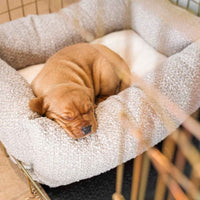

























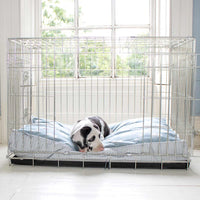
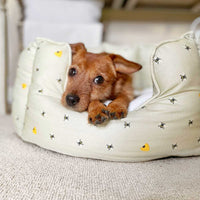

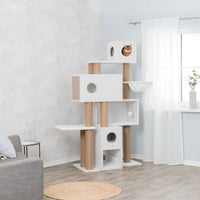
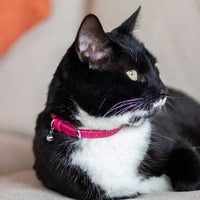






![[color:regency stripe] Luxury Spot and Stripes Pet Blanket collection, In Stunning Regency Stripe. The Perfect Blanket For Dogs, Available at Lords & Labradors](http://www.lordsandlabradors.co.uk/cdn/shop/products/Regency-Stripe-Scent-Blanket-2.jpg?v=1660130679&width=533)




.jpg?v=1723712924433&options=)
























